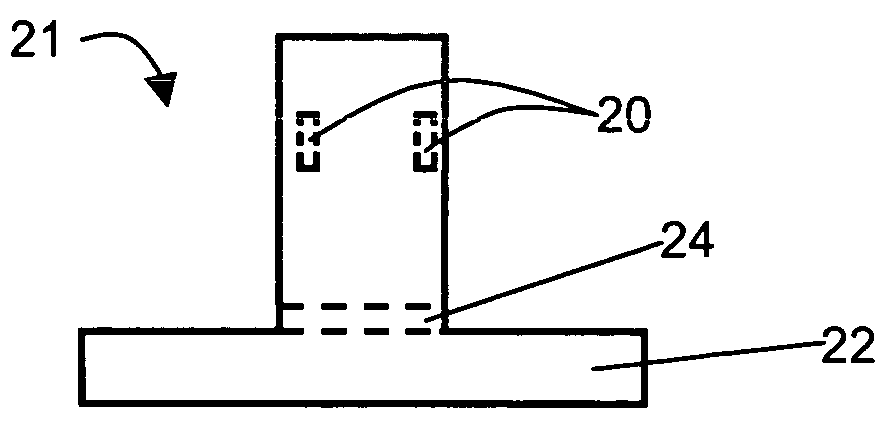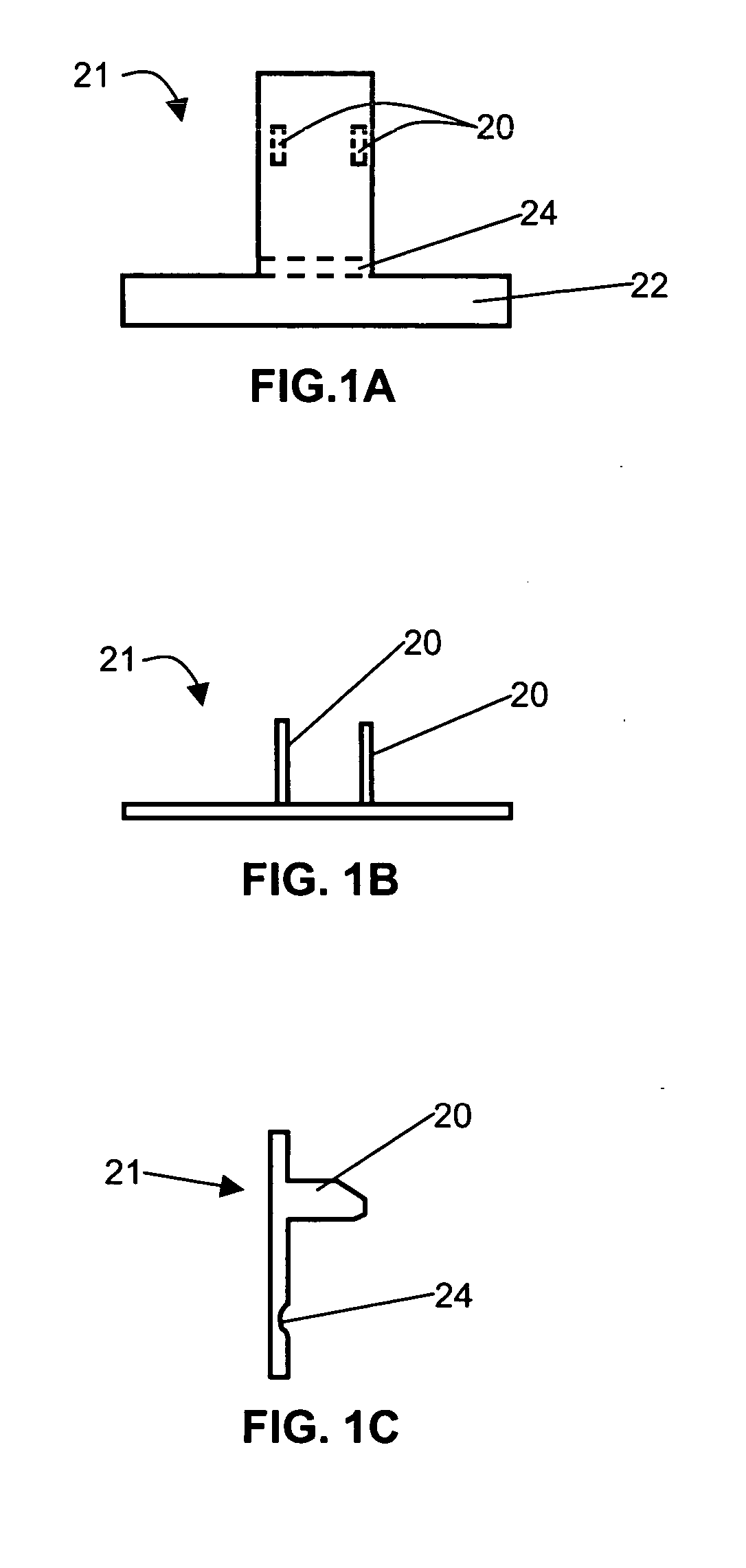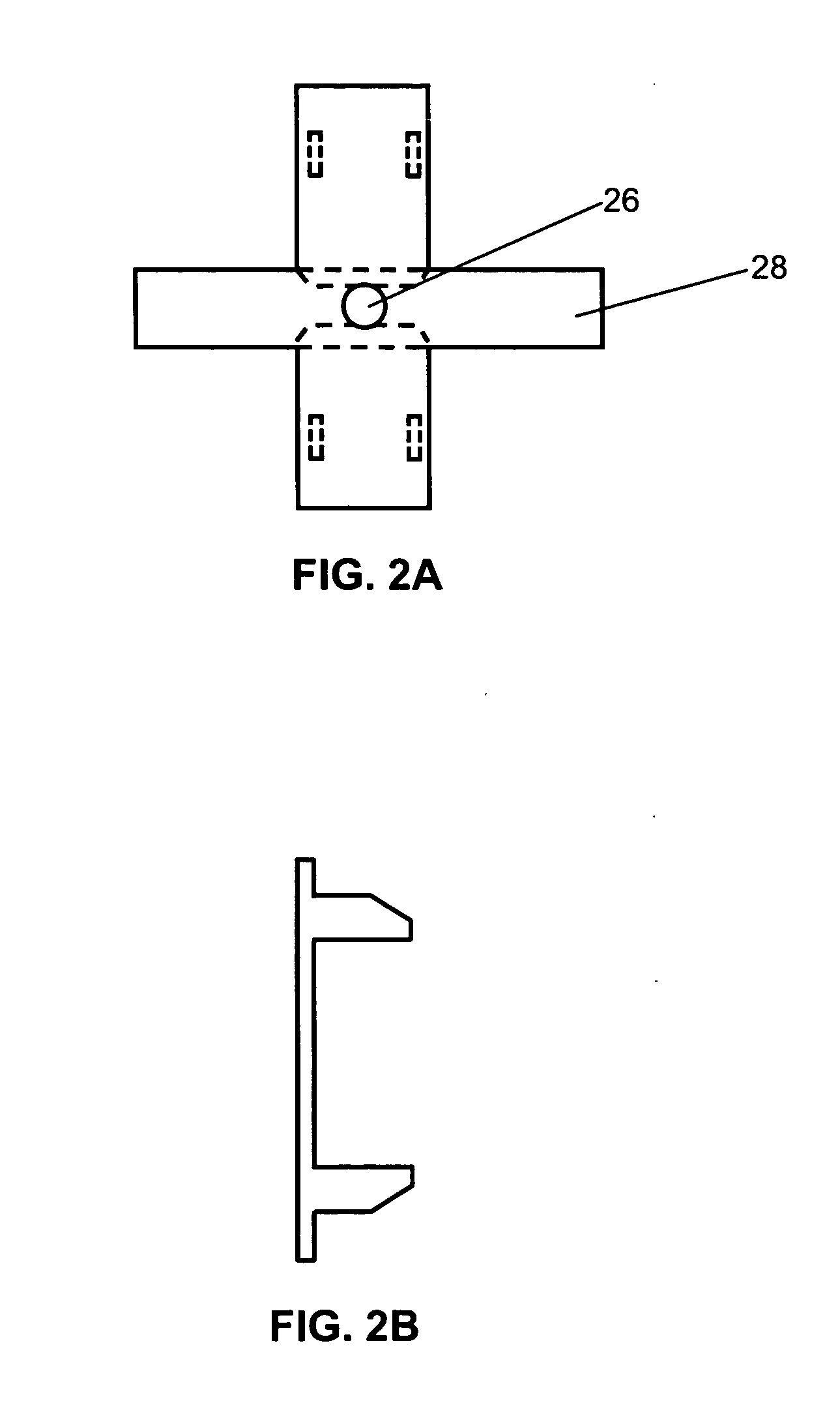Electrical outlet safety cover
- Summary
- Abstract
- Description
- Claims
- Application Information
AI Technical Summary
Benefits of technology
Problems solved by technology
Method used
Image
Examples
Embodiment Construction
FIGS. 1-4
[0032] In the simplest form of the invention (FIGS. 1A-C), a “T”-shaped plastic member 21 has molded-in prongs that articulate into and out of engagement with the outlet slots. The “T”-shaped member has an adhesive strip 22 applied to the back of the horizontal of the “T”, which sticks to the face of a duplex outlet cover plate (not shown). It is thus restrained from loss. A bendable portion 24 allows the prongs 20 to bend in and out of the receptacle (not shown).
[0033] Another variation (FIGS. 2A-B) has a cross-member in the center having a centrally-disposed hole 26 therein for receiving the mounting screw normally found in duplex outlets. Adhesive at area 28 also helps hold the cover on the outlet.
[0034] Still another variation (FIGS. 3A-B) has an adhesive strip all around its frame-like shape 30 for mounting.
[0035] The embodiment shown in FIG. 4 is similar to the embodiment of FIG. 3. The entire duplex plate is covered except for a square cutout 38 in the center to p...
PUM
 Login to View More
Login to View More Abstract
Description
Claims
Application Information
 Login to View More
Login to View More - Generate Ideas
- Intellectual Property
- Life Sciences
- Materials
- Tech Scout
- Unparalleled Data Quality
- Higher Quality Content
- 60% Fewer Hallucinations
Browse by: Latest US Patents, China's latest patents, Technical Efficacy Thesaurus, Application Domain, Technology Topic, Popular Technical Reports.
© 2025 PatSnap. All rights reserved.Legal|Privacy policy|Modern Slavery Act Transparency Statement|Sitemap|About US| Contact US: help@patsnap.com



